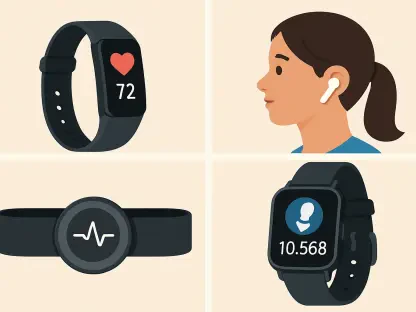Imagine a scenario where mobile communication remains intact even in the most remote or crisis-stricken regions of a country under constant threat of infrastructure disruption, such as Ukraine. In this nation, grappling with ongoing challenges to traditional networks due to conflict and natural disasters, a groundbreaking pilot test has sparked hope for a new era of connectivity. Kyivstar, the largest mobile operator in the region, recently conducted a trial of Starlink’s direct-to-cell satellite technology in the Zhytomyr area. This innovative system allows standard 4G smartphones to send and receive text messages without relying on terrestrial infrastructure, provided there’s a clear view of the sky. With key figures like Kyivstar CEO Oleksandr Komarov and Ukraine’s Minister of Digital Transformation Mykhailo Fedorov championing the initiative, this development signals a potential transformation in how mobile services can operate under duress. The implications of such technology extend far beyond a single test, hinting at a future where satellite-based solutions could become a lifeline for millions.
A Pioneering Step for Crisis Communication
The recent trial of Starlink’s direct-to-cell technology by Kyivstar marks a significant milestone in addressing communication challenges in Ukraine, especially during emergencies. This system enables satellites to function as floating base stations, transmitting signals directly to LTE devices equipped with a SIM or eSIM card. Unlike traditional networks that depend on ground-based towers, this approach bypasses the vulnerabilities of terrestrial infrastructure, which often fail during power outages or physical damage from conflict. Minister Fedorov highlighted the technology’s potential to ensure connectivity in dire situations, such as natural disasters or wartime disruptions. The ability to maintain contact without additional hardware represents a leap forward for a country where reliable communication can mean the difference between safety and isolation. As Ukraine becomes one of the first in Eastern Europe to test this innovation, the trial underscores a growing recognition of satellite solutions as critical tools for national resilience.
Beyond the immediate benefits for emergency response, the Kyivstar trial reflects a broader vision for integrating satellite technology into everyday mobile services. The successful exchange of text messages during the test demonstrates that even basic communication can be sustained in areas where traditional networks are unavailable. This is particularly relevant for rural or remote regions of Ukraine, where terrestrial coverage has historically been sparse or inconsistent. The technology’s reliance on a clear line of sight to the sky does pose some limitations, but its ability to operate independently of ground infrastructure offers a compelling alternative. With participation in a global beta program alongside countries like the United States and Australia, Ukraine is positioning itself at the forefront of a telecommunications shift. This initiative not only highlights Kyivstar’s commitment to innovation but also sets a precedent for how nations facing similar challenges might leverage satellite systems to bridge connectivity gaps.
Global Trends and Future Rollout Plans
The integration of Starlink’s direct-to-cell technology into Ukraine’s mobile landscape is part of a wider global movement toward satellite-based communication solutions. Countries such as Canada, Japan, and New Zealand are also participating in early testing phases, reflecting a shared interest in enhancing connectivity for remote and underserved areas. This trend is driven by the recognition that traditional networks, while robust in urban centers, often fall short in regions prone to natural disasters or geopolitical instability. Satellite systems offer a reliable backup, ensuring that communication lines remain open when they are needed most. For Ukraine, this technology aligns with a pressing need to fortify national infrastructure against ongoing threats. The international collaboration in testing and refining these systems suggests that satellite connectivity could soon become a mainstream complement to ground-based networks worldwide.
Looking ahead, Kyivstar and Starlink are laying the groundwork for commercial deployment of this technology in Ukraine, with text messaging services expected to launch by late this year. Voice and broadband data capabilities are slated to follow in early 2026, though initial bandwidth will be notably slower—potentially 10 to 100 times less than terrestrial networks. This constraint means early applications will likely focus on low-data tasks, such as emergency messaging, rather than high-bandwidth activities like streaming. While pricing details remain under wraps, speculation suggests costs could mirror existing Starlink offerings, adjusted through partnerships with local operators. Additionally, Kyivstar’s parent company, VEON, is exploring collaborations with other satellite providers to diversify connectivity options. This strategic approach indicates a long-term commitment to expanding mobile satellite services, not just within Ukraine but potentially across other regions facing similar connectivity challenges.
Building a Resilient Communication Framework
The promise of Starlink’s technology lies in its potential to create a more resilient communication framework for Ukraine, a nation where network disruptions have become a harsh reality. The ability to maintain contact during crises—whether caused by conflict, power failures, or environmental disasters—could transform how emergency services and civilians coordinate in critical moments. While the current scope of the technology is limited to basic functions like texting, its role as a supplementary service is undeniable. The trial in Zhytomyr has proven that direct-to-cell connectivity can work in real-world conditions, offering a glimpse into a future where satellite systems act as a safety net for traditional networks. As refinements continue, the focus will likely shift toward enhancing user experience and addressing logistical hurdles, such as ensuring consistent satellite coverage across varied terrains.
Reflecting on the broader implications, the successful testing phase carried out by Kyivstar showcased a pivotal moment in blending satellite innovation with practical necessity. It highlighted Ukraine’s role as a testing ground for cutting-edge solutions that could inspire similar initiatives elsewhere. As commercialization approaches, the emphasis shifts to overcoming early limitations like bandwidth constraints and establishing sustainable pricing models. The efforts of the past have paved the way for a future where communication in remote and crisis-affected areas is no longer a luxury but a guarantee. Moving forward, stakeholders will need to prioritize scalability and accessibility, ensuring that the benefits of this technology reach those who need it most. This journey, sparked by a single trial, points toward a redefined telecommunications landscape, one where satellite systems play an integral role in global connectivity.









